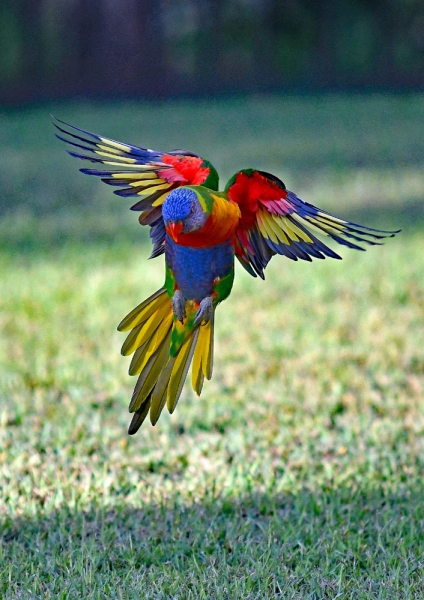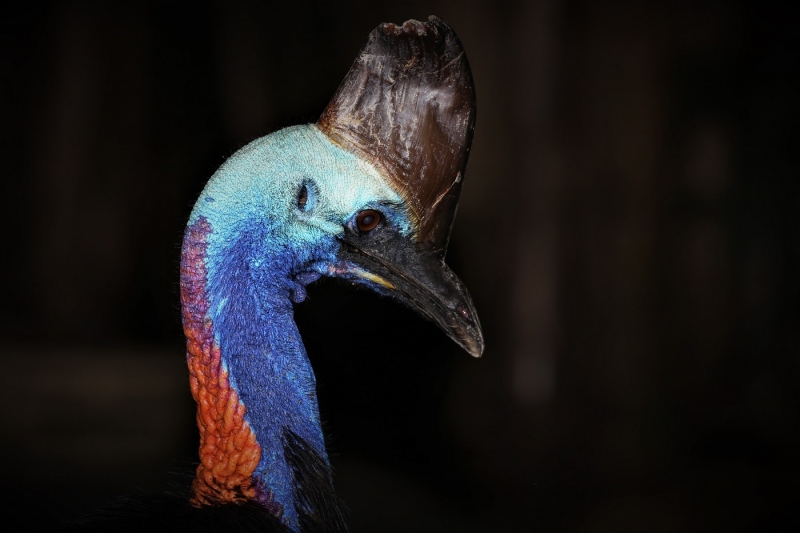What does the term “being blue” mean? To be honest, I don’t really know. However, as you have been asked to submit pictures of birds that either have “blue” in the species name or which have “blue” in their plumage or other features, I take it that “blue” refers to a colour and not to a state of mood or anything else.
So, in trying to solve this puzzle, I have tried to identify those images where the colour blue is an integral part of the image and not merely coincidental. With this in mind I have identified 12 images which I consider best meet this criterion.
The next challenge was to decide how to rank them as they all meet the basic requirement. I have approached this task by applying the same criterion as I would in evaluating any photographic image, by taking into account matters such as technical quality, impact, composition and uniqueness.
I must say that choosing between what I considered to be the two top images was difficult and required much thought. These are my final determinations:
Winner: Rainbow Lorikeet, by Jillian Graham (Image ID 30299)
Whilst this image doesn’t have the same concentration of blue as the runner up, this is the one that stands out. Although this is a set subject, it is a photographic competition and the best overall image must win, provided it meets the requirements of the competition. Although the Lorikeet is multi coloured, the vivid blue of the head and body and in the wings significantly adds to the vibrancy of the image. Capturing the bird in mid-air with such sharpness and detail is a great achievement. The bird is nicely separated from the background. Nothing to criticise here. An outstanding image. Congratulations.
Highly Commended: Rainbow Lorikeet, by McKinley Moens (Image ID 30406 - image no longer available)
This is also an outstanding image. Pity there can be only one winner. I was impressed by its technical excellence. The head of the Lorikeet is sharp and extremely detailed. It reminds us of how beautiful and colourful some birds can be. Whilst all the colours are vibrant, the blue feathers stand out. Perfect. Although the image is tightly cropped, sufficient space has been left around the head so it is not cramped. This is a good example of how to gain impact by isolating your subject and simplifying the composition. The eye is bright and sharp as it should be. An impressive image and a very worthy runner up.
Commended: Blue-faced Honeyeater, by Warren Bennet (Image ID 30011)
Another quality bird portrait. With “blue” in name and with a blue flash above the eye, it certainly meets the requirements of the competition. It is an appealing image. The bird is sharp with good detail. The depth-of-field is spot on. Unfortunately, the image is let down by a band of light cutting across the bottom of the image. Such a pity as it is otherwise a very good image. Would cropping eliminate the problem?
Commended: Southern Cassowary, by Deanne Gaskill (Image ID 30360)
For me, this image has great artistic merit. It really caught my eye. The blue colours bring life to the image. The black background works well at an artistic level. It focuses our attention on the bird so we can appreciate its vibrant beauty. From a technical aspect, the image is let down by the fact that the eye is relatively dull and not as sharp as it should be. Does that worry me? No. I still love it.
Commended: Purple Swamphen, by McKinley Moens (Image ID 30405 - image no longer available)
Another impressive portrait. Whilst the red beak is dominant, the large area of blue makes an important contribution to the colour palette. The eye is sharp with a nice catch light. The feather detail is impressive. The head is nicely separated from the unobtrusive background. Hard to fault.


